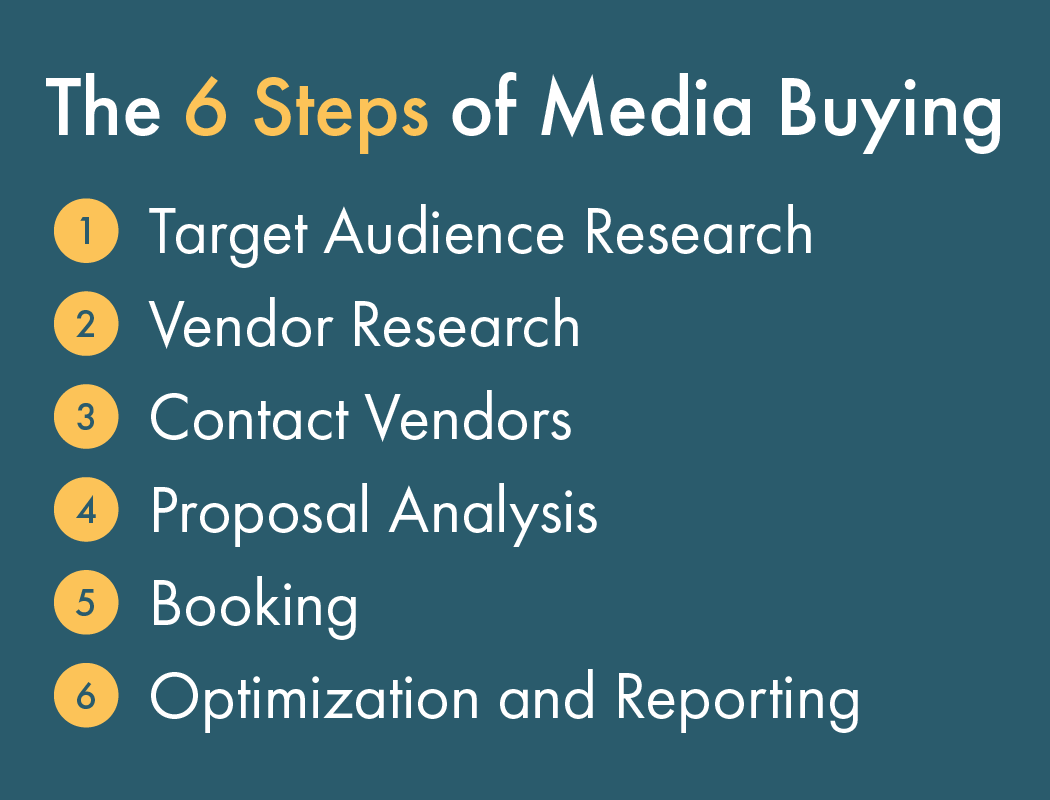Over 25 years ago, my journey in the advertising world began with my first job as an Ad Trafficker for a local TV station. I wrote weekly schedules for the station’s ad placements by hand. It wasn’t the most glamorous job, but I’m so grateful that it sowed the seed for my lifelong passion for media and advertising.
A lot has changed since then, both for myself and my industry. I switched from the vendor side to the client side (specifically the agency side), and the advent of digital advertising has transformed so much of what I do.
I still hold on to some “old school” elements of my earlier days in advertising (like writing some of my media buys by hand first).
In spite of the ever-changing nature of this industry, I love my work as a Media Planner/Media Buyer. That includes all I do to stay on top of all the industry news. Keeping up to date is not just my responsibility to our clients—it’s also really exciting.
But to outsiders and newbies, the advertising world can be mysterious. I suspect that this is partially why I’m often asked, “What exactly do you do in your work?”
Fortunately, I love talking about media buying. So today, I’ll be writing about it.
What are the 6 steps of media buying?

Step 1: Target audience research
I always start by thoroughly analyzing my client’s target audience. I ask questions like:
- What is the age of the people we are trying to reach?
- What is their gender?
- What other demographic and psychographic factors are relevant?
Then, I research the audience’s media consumption habits. Sometimes, we find that the exact audience members we want to reach don’t consume certain media enough. For example, digital audiences are different than TV audiences, which are different than radio audiences, which are different than billboard audiences… the list goes on.
I work with the client to help them select the best mediums for their campaigns, which are sometimes not the mediums they initially had in mind.
Step 2: Vendor research
Next, it’s time to research vendors and pinpoint the best fit for the audience. For example, we may know we want to purchase radio ads, but there could be 50 stations within one community.
How do I choose which vendors to contact? I start by looking at ratings. Ratings indicate how many individuals consume a piece of content (in other words, listeners or viewers).
I look at the media outlet’s most recent ratings, but I don’t stop there. To get a fuller picture of the number of eyes and/or ears that our ad will reach, I examine their historical ratings. What were the ratings this time last year?
It’s also important to confirm that the target audience consumes this specific piece of media. A primetime TV show may have a large audience, but that audience may not encompass all of the people you need to reach. Or it could encompass the audience plus a ton of people you don’t need.
When you pay for media, the sweet spot is to get as targeted as possible so that you don’t waste media spend on people who are not within your target market. Many novice media buyers fall into the trap of buying popular programs but quickly running through their budget paying a premium and wasting their spend reaching markets they don’t need. Part of my job is to ensure the cost our clients pay per thousand impressions (CPM) is well within reason.
Keep in mind, too, that audience preferences change over time. It’s important to know exactly which execution will be the right fit for our audience in the current day. For example, media consumption has shifted greatly since the pandemic with even more people opting towards digital platforms for both entertainment and shopping. This has made digital media buying all the more important in my line of work.
Step 3: Contact vendors
When I contact vendors, I request a proposal made specifically for my client—not a generic media buy package. These more tailored options help ensure that my client receives the best return for their advertising spend possible.
For example, we may only buy news programming spots for a client, or only focus on Spanish-language radio programming. Any opportunities that fall outside of the client’s unique campaign goals are not worth pursuing.
At this step, I leverage my decades-long relationships with vendors, especially in the San Antonio area. These vendors know and trust me, and I know and trust them as well.
Sometimes, these relationships result in unexpected perks for my clients. For example, my contacts at magazines have come to me and said, “Hi Anel, we have a last-minute extra page to fill. We’ll feature your client at no charge.”
Step 4: Proposal analysis/negotiation
It’s time to analyze and negotiate. I compare all of the proposals the vendors submitted. Requesting proposals that cost around the same amount allows for more effective comparison.
Throughout my years of experience, I have developed a strong sense of what would be a fair and appropriate cost for all types of media. This gives me an initial idea of whether a proposal is priced appropriately.
While comparing, I ask myself:
- What is the CPM for each proposal?
- Which proposal would benefit the client the most?
This is also when I start to look for added value, which are bonus ad placements often worth around 15-30% of the client’s total ad spend. Some examples of added value are:
- Extra weeks on a billboard
- An extra advertorial on a website
- Extra spots on TV or radio
- Extra insertions in a newspaper
- More digital impressions
- Sponsorship spots (e.g. “This was brought to you by Great Company!”)
- In-person event visits from radio hosts, called “remotes”
The added value portion is one of my favorites. (Not to toot my own horn, but I have been called “Added Value Anel!”)
Step 5: Booking
Next, it’s time for booking, also called “placement”.
I send an insertion order to book the media purchases. At this step, it’s important to receive the vendor’s signature, indicating that they agree to the purchase. This is because there can be complications, especially when an employee leaves the vendor. In cases like these, written records are an absolute necessity.
Step 6: Optimization and reporting
Last but not least, I:
- Ensure that all planned media placements ran
- Share reports
- Make adjustments when necessary
Using information from the vendors, I compare the media buy with exactly what ran when. Sometimes, a planned ad placement will not run due to an emergency news broadcast or an overbooking on the vendor’s part. It’s crucial that I catch this. Vendors are always happy to make good when this occurs. I’ve never had a vendor hold my client’s advertising dollars hostage.
I pass this information and more along to the client in reports.
These reports also include:
- Monthly digital ad reports with a summary of what was spent, CPM, overall cost, and month-to-month variations
- Monthly affidavits from radio broadcasters
- Quarterly traditional media reports
Generally speaking, it is easier to make changes after going live for digital ads than for broadcast ads. Other forms of traditional media—such as magazines and out-of-home advertising—usually require a long notice for any changes as well.
Some examples of changes we might make are:
For digital ads:
- Swap out the creative
- Remove underperforming creative
- Move funds from one ad to another based on performance
- Change the ad schedule
For broadcast ads:
- Change to a different program (or another radio station)
- Move funds from one station to another
ROI analysis
This portion of the optimization and reporting step deserves its own section. ROI tracking is key.
In my work, there are two types of ROI:
- Business ROI—This type of ROI tracking is dependent on the data that the client provides us with. For example, we can use call log information to attribute inbound calls to an ad according to when the ad ran.
- Media ROI—We calculate this ROI regardless of what information the client shares with us. This is the difference between what the client paid for the ads versus what they would have paid if they had purchased all media spots individually at full price.
Hint: Both ROIs should be high!
An important note on client relationships
My clients are comfortable and informed throughout the media buying process. I am all about being up-front and accessible.
Don’t understand something? No worries! My clients are welcome to reach out to me at any point throughout this process. Answering questions and providing clarity are an important part of my work.
A great media buyer relationship involves true partnership, and it’s a pleasure serving as an extension of my clients’ teams.
Looking for an experienced media buyer?
If you’re seeking an experienced media buyer who will secure the most impactful, cost-effective media for your business, you’re in the right place. Reach out to our team at Creative Noggin. We’ll discuss your goals and find out if our agency would be a great fit for your company.
